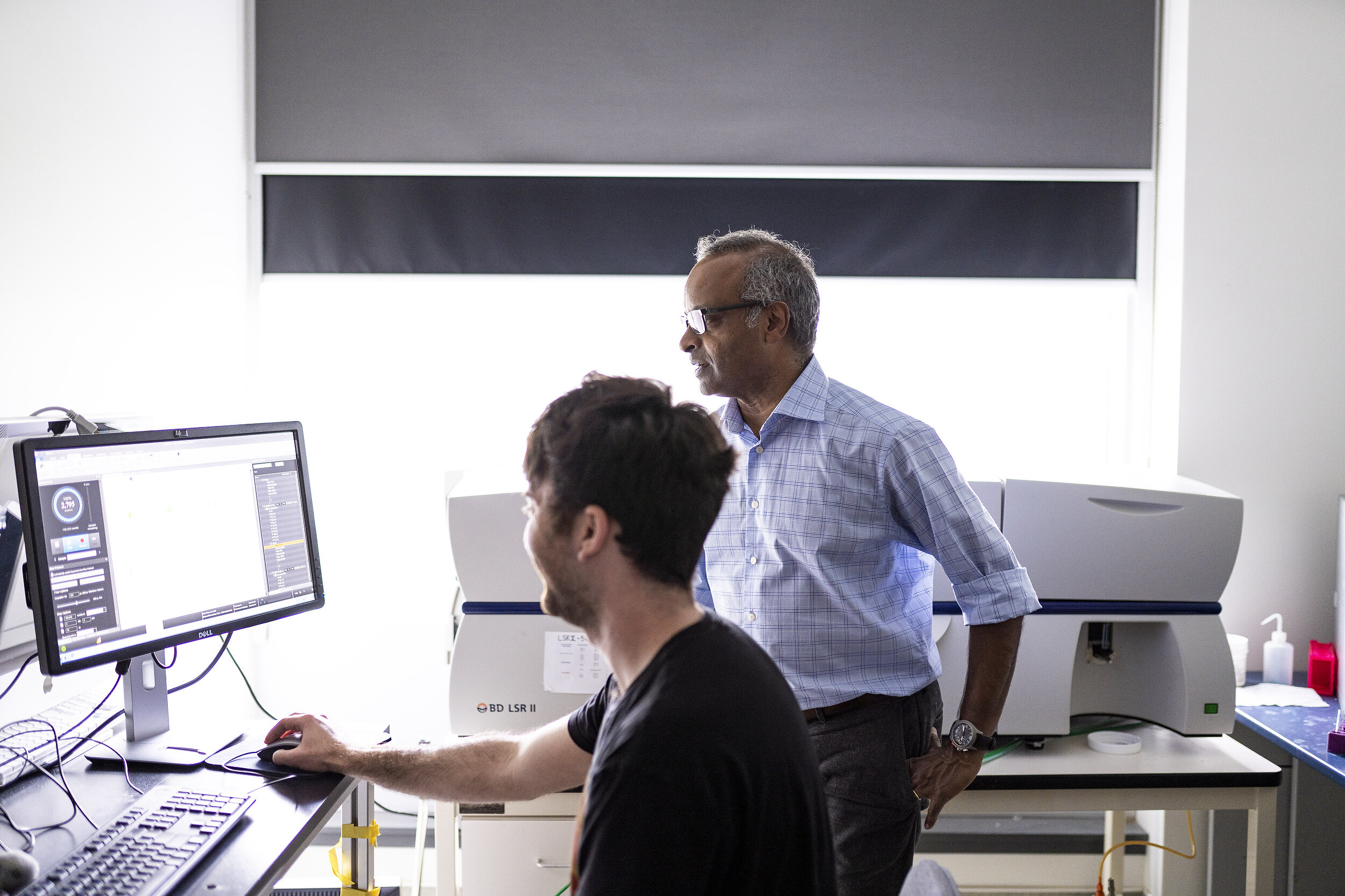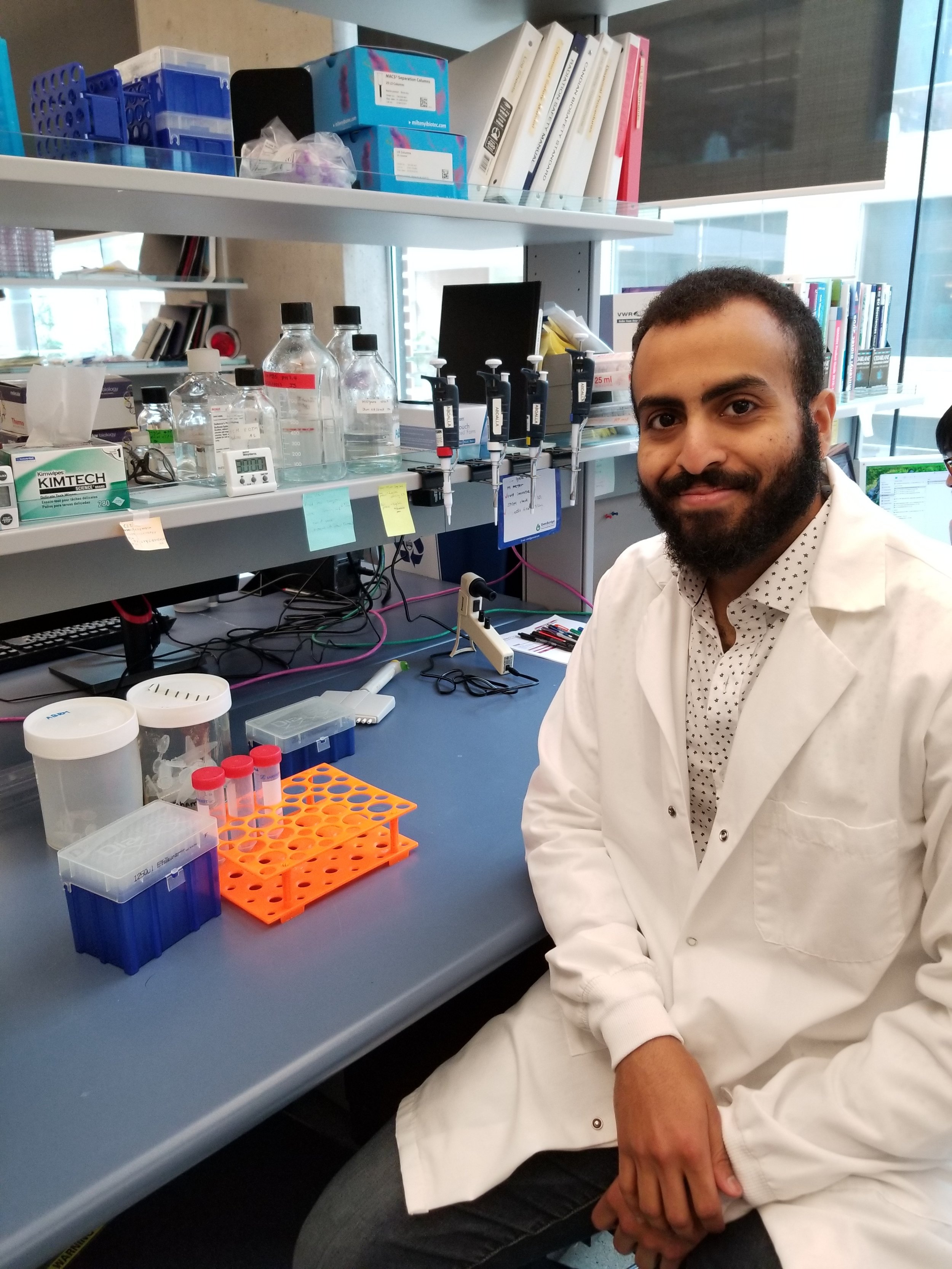Our current research
Interleukin-7 in Adaptive Response to Lung Viral Infections
In our lab we are interested in deciphering new roles for Interleukin-7 (IL-7) in immune responses that go beyond its role in development of lymphocytes. In the past decade, IL-7 was found to be important for revitalizing exhausted T-cells in chronic viral infections. How IL-7 enhances effector T-cells in response to acute infections such as Influenza/A is unclear. Our lab uses loss-of-function, conditional knockouts, reporter lines and hypomorphic mouse models of IL-7R and TSLPR models to address how this cytokine shapes such airway responses. We apply a combination of genetic tools, cellular immunology and high-parameter flow analyses to address our research questions.
Interleukin-7 in the Regulation of Innate Lymphoid Cell Development and Function
Innate lymphoid cells (ILCs) are a rare population of immune cells that act as the first line of defence against pathogens. Type 2 ILCs (ILC2s) have roles in triggering allergic reactions and promoting lung tissue repair after Influenza challenge, and are dependent on IL-7 for survival and proliferation signals. This research uses bioinformatics and high-parameter flow cytometry to evaluate the transcriptional landscape regulated by IL-7 in ILC2s and to determine whether it serves a significant role in mature ILC2 function.
Interleukin-7 Receptor Regulation by RNA Regulators
Due to the importance of IL-7 and its receptor in immune system function, we want to further our understanding of how IL-7Ralpha expression is controlled dynamically. Programmed ribosomal frameshift (PRF) is a type of translational regulation that influences the abundance of certain proteins. PRF motifs have been computationally identified in IL-7Ralpha mRNA, as well as potential microRNA binding sites. This research uses in vitro techniques, flow cytometry, and bioinformatics to assess the relationship between IL-7Ralpha PRF and T cell function.
Tumour Intrinsic Mechanisms of Immunosuppression in CD8 T Cell Function and Response to Lung Cancer
Immunotherapies are effective in a subset of patients with non-small cell lung cancer (NSCLC), but the majority do not respond highlighting the need for novel therapeutics and biomarkers. In collaboration with the British Columbia Cancer Research Center (BCCRC) we are studying how tumor cell intrinsic mechanisms regulate chemokine or cytokine production to induce an immunosuppressive tumour microenvironment and inhibit CD8+ T cell anti-tumour function. This research uses in vitro and in vivo mouse syngeneic mouse models of lung cancer, and bioinformatics analysis of human databases of NSCLC patients.
Funding
The Abraham lab is currently funded under the following grants:
Canadian Institutes of Health Research (PJT-156119)
Natural Sciences and Engineering Research Council of Canada (RGPIN-2018-04852)










